Preparation of Electric- and Magnetic-Activated Water and Its Influence on the Workability and Mechanical Properties of Cement Mortar
Abstract
1. Introduction
2. Materials and Methods
2.1. Raw Materials
2.2. Electric Field Activated Device
2.2.1. High-Voltage Field
2.2.2. High-Frequency Field
2.2.3. Alternating Voltage Field
2.3. Magnetic Field Activated Device
2.4. Measurement of the Physical Properties of Water
2.5. Measurement of the Workability of Cement Paste
3. Results and Discussion
3.1. Physical Properties of Water
3.1.1. Water in a Natural State
3.1.2. Influence of the Electric Field
3.1.3. Influence of the Magnetic Field
3.2. Workability of Cement Paste
3.2.1. Prepared with Electric-Activated Water
3.2.2. Prepared with Magnetic-Activated Water
3.3. Mechanical Properties of Cement Mortar
4. Conclusions
- (1)
- The physical properties of activated water, including the pH and Abs values, varied as the electric and magnetic field changed, and their values increased significantly, exhibiting improved activity compared with that of the untreated water. The pH values with remarkable enhancement came from water treated with a high voltage of 2400 V, high frequency signals of 15 MHz, an alternating voltage of 15 V, and a magnetic field intensity of 650 mT. The obvious improvement in the Abs values were obtained at the wavelengths of 195 nm for the electric field and 190 nm for the magnetic field. In addition, activated water still retains activity within 30 min of the resting time.
- (2)
- The workability of cement paste prepared with activated water could be improved to varying degrees, and the improvement was more prominent for samples with longer curing times. However, the level of improvement differed with the worst performance resulting from cement paste prepared with alternating voltage-activated water. For the fluidity of cement paste prepared with magnetic-activated water, the best performance was observed for water treated with a magnetic intensity of 280 mT coupled with a current velocity of 1.0 m/s.
- (3)
- The mechanical strength of cement mortar prepared with magnetic-activated water can be improved by 27% in compressive strength and 31% in flexural strength as the curing time increased from 7 days to 28 days. They both obtained its maximum values at 280 mT with two processing cycles. In addition, through the introduction of magnetic-activated water into cement mortar, the mechanical strength can be maintained without losing its workability when the amount of cement is reduced.
Author Contributions
Funding
Institutional Review Board Statement
Informed Consent Statement
Data Availability Statement
Conflicts of Interest
References
- Cho, S.; Lim, M.; Lee, C. Study on the Bending and Joint Performances of Reinforced Concrete Beams Using High-Strength Rebars. Sustainability 2021, 13, 3482. [Google Scholar] [CrossRef]
- Boudali, S.; Abdulsalam, B.; Rafiean, A.H.; Poncet, S.; Soliman, A.; ElSafty, A. Influence of Fine Recycled Concrete Powder on the Compressive Strength of Self-Compacting Concrete (SCC) Using Artificial Neural Network. Sustainability 2021, 13, 3111. [Google Scholar] [CrossRef]
- Okazaki, Y.; Okazaki, S.; Asamoto, S.; Chun, P.O. Applicability of machine learning to a crack model in concrete bridges. Comput. Aided Civ. Infrastruct. Eng. 2020, 35, 775–792. [Google Scholar] [CrossRef]
- Gamal, H.A.; El-Feky, M.S.; Alharbi, Y.R.; Abadel, A.A.; Kohail, M. Enhancement of the Concrete Durability with Hybrid Nano Materials. Sustainability 2021, 13, 1373. [Google Scholar] [CrossRef]
- Zhang, P.; Wittmann, F.H.; Lura, P.; Muller, H.S.; Han, S.B.; Zhao, T.J. Application of neutron imaging to investigate fundamental aspects of durability of cement-based materials: A review. Cem. Concr. Res. 2018, 108, 152–166. [Google Scholar] [CrossRef]
- Plank, J.; Sakai, E.; Miao, C.W.; Yu, C.; Hong, J.X. Chemical admixtures—Chemistry, applications and their impact on concrete microstructure and durability. Cem. Concr. Res. 2015, 78, 81–99. [Google Scholar] [CrossRef]
- Song, Q.; Zhao, H.Y.; Jia, J.W.; Yang, L.; Lv, W.; Bao, J.W.; Shu, X.Q.; Gu, Q.X.; Zhang, P. Pyrolysis of municipal solid waste with iron-based additives: A study on the kinetic, product distribution and catalytic mechanisms. J. Clean. Prod. 2020, 258, 120682. [Google Scholar] [CrossRef]
- de Carvalho, J.M.; Fontes, W.C.; de Azevedo, C.F.; Brigolini, G.J.; Peixoto, R.A. Enhancing the eco-efficiency of concrete using engineered recycled mineral admixtures and recycled aggregates. J. Clean. Prod. 2020, 257, 120530. [Google Scholar] [CrossRef]
- Naik, T.R. Sustainability of concrete construction. Pract. Period. Struct. Des. Constr. 2008, 13, 98–103. [Google Scholar] [CrossRef]
- Hou, P.K.; Kawashima, S.; Wang, K.J.; Corr, D.J.; Qian, J.S.; Shah, S.P. Effects of colloidal nano silica on rheological and mechanical properties of fly ASH–cement mortar. Cem. Concr. Compos. 2013, 35, 12–22. [Google Scholar] [CrossRef]
- Saddam, M. Effect of magnetic water on engineering properties of concrete. J. Al-Rafidain Eng. 2009, 7, 71–82. [Google Scholar] [CrossRef]
- Wei, H.; Wang, Y.; Luo, J. Influence of magnetic water on early-age shrinkage cracking of concrete. Constr. Build. Mater. 2017, 147, 91–100. [Google Scholar] [CrossRef]
- Djellabi, R.; Yang, B.; Sharif, H.M.A.; Zhang, J.; Ali, J.; Zhao, X. Sustainable and Easy Recoverable Magnetic TiO2-Lignocellulosic Biomass@Fe3O4 for Solar Photocatalytic Water Remediation. J. Clean. Prod. 2019, 233, 841–847. [Google Scholar] [CrossRef]
- Ahmed, H.I. Behavior of magnetic concrete incorporated with Egyptian nano alumina. Constr. Build. Mater. 2017, 150, 404–408. [Google Scholar] [CrossRef]
- Su, N.; Wu, Y.H.; Mar, C.Y. Effect of magnetic water on the engineering properties of concrete containing granulated blast-furnace slag. Cem. Concr. Res. 2000, 30, 599–605. [Google Scholar] [CrossRef]
- Su, N.; Wu, C.-F. Effect of magnetic field treated water on mortar and concrete containing fly ash. Cem. Concr. Compos. 2003, 25, 681–688. [Google Scholar] [CrossRef]
- Patil, S.V.; Pathak, N.J. The Experimental Study on Compressive Strength of Concrete Using AR Glass Fibers and Partial Replacement of Cement with GGBS with Effect of Magnetic Water. Int. J. Eng. Technol. Manag. Appl. Sci. 2016, 4, 21–29. [Google Scholar]
- Bikul’Chyus, G.; Ruchinskene, A.; Deninis, V. Corrosion Behavior of Low-Carbon Steel in Tap Water Treated with Permanent Magnetic Field. Prot. Met. 2003, 39, 443–447. [Google Scholar] [CrossRef]
- Afshin, H.; Gholizadeh, M.; Khorshidi, N. Improving Mechanical Properties of High Strength Concrete by Magnetic Water Technology. Iran. J. Sci. Technol. Trans. Civ. Eng. 2010, 17, 74–79. [Google Scholar] [CrossRef]
- Zhang, P.; Wittmann, F.H.; Vogel, M.; Muller, H.S.; Zhao, T.J. Influence of freeze-thaw cycles on capillary absorption and chloride penetration into concrete. Cem. Concr. Res. 2017, 100, 60–67. [Google Scholar] [CrossRef]
- Bao, J.W.; Li, S.G.; Zhang, P.; Ding, X.Y.; Xue, S.B.; Cui, Y.F.; Zhao, T.J. Influence of the incorporation of recycled coarse aggregate on water absorption and chloride penetration into concrete. Constr. Build. Mater. 2020, 239, 117845. [Google Scholar] [CrossRef]
- Zhao, K.Y.; Qiao, Y.; Zhang, P.; Bao, J.W.; Tian, Y.P. Experimental and numerical study on chloride transport in cement mortar during drying process. Constr. Build. Mater. 2020, 258, 119655. [Google Scholar] [CrossRef]
- Bao, J.W.; Li, S.G.; Zhang, P.; Xue, S.B.; Cui, Y.F.; Zhao, T.J. Influence of exposure environments and moisture content on water repellency of surface impregnation of cement-based materials. J. Mater. Res. Technol. 2020, 9, 12115–12125. [Google Scholar] [CrossRef]
- Hover, K.C. The influence of water on the performance of concrete. Constr. Build. Mater. 2011, 25, 3003–3013. [Google Scholar] [CrossRef]
- Zhou, K.X.; Lu, G.W.; Zhou, Q.C.; Song, J.H.; Jiang, S.T.; Xia, H.R. Monte Carlo simulation of liquid water in a magnetic field. J. Appl. Phys. 2000, 88, 1802–1805. [Google Scholar] [CrossRef]
- Toledo, E.J.L.; Ramalho, T.C.; Magriotis, Z.M. Influence of magnetic field on physical–chemical properties of the liquid water: Insights from experimental and theoretical models. J. Mol. Struct. 2008, 888, 409–415. [Google Scholar] [CrossRef]
- Wang, Y.; Zhang, B.; Gong, Z.; Gao, K.; Ou, Y.; Zhang, J. The effect of a static magnetic field on the hydrogen bonding in water using frictional experiments. J. Mol. Struct. 2013, 1052, 102–104. [Google Scholar] [CrossRef]
- Ran, C.; Yang, H.; He, J.; Zhu, W. The effects of magnetic fields on water molecular hydrogen bonds. J. Mol. Struct. 2009, 938, 15–19. [Google Scholar] [CrossRef]
- Xue, S.B.; Zhang, P.; Wang, J.J.; Bao, J.W.; Han, S.B.; He, L.F. Influences of thermal damage on water transport in heat-treated cement mortar: Experimental and theoretical analyses. Constr. Build. Mater. 2021, 288, 123100. [Google Scholar] [CrossRef]
- Xue, S.B.; Meng, F.Q.; Zhang, P.; Bao, J.W.; Wang, J.J.; Zhao, K.Y. Influence of water re-curing on microstructure of heat-damaged cement mortar characterized by low-field NMR and MIP. Constr. Build. Mater. 2020, 262, 120532. [Google Scholar] [CrossRef]
- Zhang, P.; Dai, Y.; Wang, W.; Yang, J.; Guo, W.; Bao, J. Effects of magnesium oxide expansive agents on the self-healing performance of microcracks in Strain-Hardening Cement-based Composites (SHCC). Mater. Today Commun. 2020, 25, 101421. [Google Scholar] [CrossRef]
- Esmaeilnezhad, E.; Choi, H.J.; Schaffie, M.; Gholizadeh, M.; Ranjbar, M. Characteristics and applications of magnetized water as a green technology. J. Clean. Prod. 2017, 161, 908–921. [Google Scholar] [CrossRef]
- Ghauri, S.A.; Ansari, M.S. Increase of water viscosity under the influence of magnetic field. J. Appl. Phys. 2006, 100, 066101. [Google Scholar] [CrossRef]
- Cong, Y.; Zhang, P.; Jiang, W.U.; Dai, Z.Z.; Li, P.B.; Zhao, T.J. Effect of Magnetic Field Activated Water on Properties of Cement Mixture. Bull. Chin. Ceram. Soc. 2017, 36, 4217–4223. [Google Scholar]
- Soto-Bernal, J.J.; Rosario, G.M.; Iliana, R.C.; Ortiz-Lozano, J.A. Effects of Static Magnetic Fields on the Physical, Mechanical, and Microstructural Properties of Cement Pastes. Adv. Mater. Sci. Eng. 2015, 2015, 934195. [Google Scholar] [CrossRef]
- Boshnakov, D. Microstructure of Hydrated Cement Pastes Prepared with Plain and Mechanically Activated Water. J. Mater. Sci. Technol. 2014, 22, 245–254. [Google Scholar]
- Ghorbani, S.; Gholizadeh, M.; Brito, J.D. Effect of Magnetized Water on the Mechanical and Durability Properties of Concrete Block Pavers. Materials 2018, 11, 1647. [Google Scholar] [CrossRef]
- Gholhaki, M.; Kheyroddin, A.; Hajforoush, M.; Kazemi, M. An investigation on the fresh and hardened properties of self-compacting concrete incorporating magnetic water with various pozzolanic materials. Constr. Build. Mater. 2018, 158, 173–180. [Google Scholar] [CrossRef]
- Wang, Y.; Liu, B.; Qi, Y. A risk evaluation method with an improved scale for tunnel engineering. Arab. J. Sci. Eng. 2018, 43, 2053–2067. [Google Scholar] [CrossRef]
- Liu, Y.M.; Li, Z.K. Experimental Study about Modifying Cement Slurry in Physics Field. Acta Pet. Sin. 2000, 21, 91–94. [Google Scholar] [CrossRef]
- Bateni, A.; Susnar, S.S.; Amirfazli, A.; Neumann, A.W. Development of a New Methodology to Study Drop Shape and Surface Tension in Electric Fields. Langmuir ACS J. Surf. Colloids 2004, 2004, 7589–7597. [Google Scholar] [CrossRef] [PubMed]
- Danielewicz-Ferchmin, I.; Ferchmin, A.R. Phase Diagram of Electrostricted H2O at Surfaces of Electrodes at 273–373 K: Electric Critical Point of Water. ChemPhysChem A Eur. J. Chem. Phys. Phys. Chem. 2005, 6, 1499–1509. [Google Scholar] [CrossRef]
- Horne, R.A. Marine Chemistry: Structure of Water and the Chemistry of the Hydrosphere; John Wiley & Sons Inc.: New York, NY, USA, 1969. [Google Scholar]
- Xiao, F.P.; Xin, S.Z. The influences of magnetized water on physical properties of concrete. In Proceedings of the International Conference on Applied Superconductivity & Electromagnetic Devices, Sydney, Australia, 14–16 December 2011. [Google Scholar]
- Fathi, A.; Mohamed, T.; Claude, G.; Maurin, G.; Mohamed, B.A. Effect of a magnetic water treatment on homogeneous and heterogeneous precipitation of calcium carbonate. Water Res. 2006, 40, 1941–1950. [Google Scholar] [CrossRef]
- Rai, S.; Singh, N.N.; Mishra, R.N. Magnetic restructuring of water. Med. Biol. Eng. Comput. 1995, 33, 614–617. [Google Scholar] [CrossRef] [PubMed]
- Colic, M.; Morse, D. The elusive mechanism of the magnetic ‘memory’ of water. Colloids Surf. A Physicochem. Eng. Asp. 1999, 154, 167–174. [Google Scholar] [CrossRef]
- Lü, T.; Qi, D.; Zhang, D.; Fu, K.; Zhao, H. Fabrication of recyclable multi-responsive magnetic nanoparticles for emulsified oil-water separation. J. Clean. Prod. 2020, 255, 120293. [Google Scholar] [CrossRef]
- Starmer, J.E. Magnetic Treatment of Swimming Pool Water for Enhanced Chemical Oxidation and Disinfecting. Ph.D. Thesis, Cranfield University, Cranfield, UK, 1996. [Google Scholar]
- Wang, W.T.; Zhao, K.Y.; Zhang, P.; Bao, J.W.; Xue, S.B. Application of three self-developed ECT sensors for monitoring the moisture content in sand and mortar. Constr. Build. Mater. 2020, 267, 121008. [Google Scholar] [CrossRef]
- Li, Z. Advanced Concrete Technology; John Wiley & Sons Inc.: Hoboken, NJ, USA, 2003. [Google Scholar]
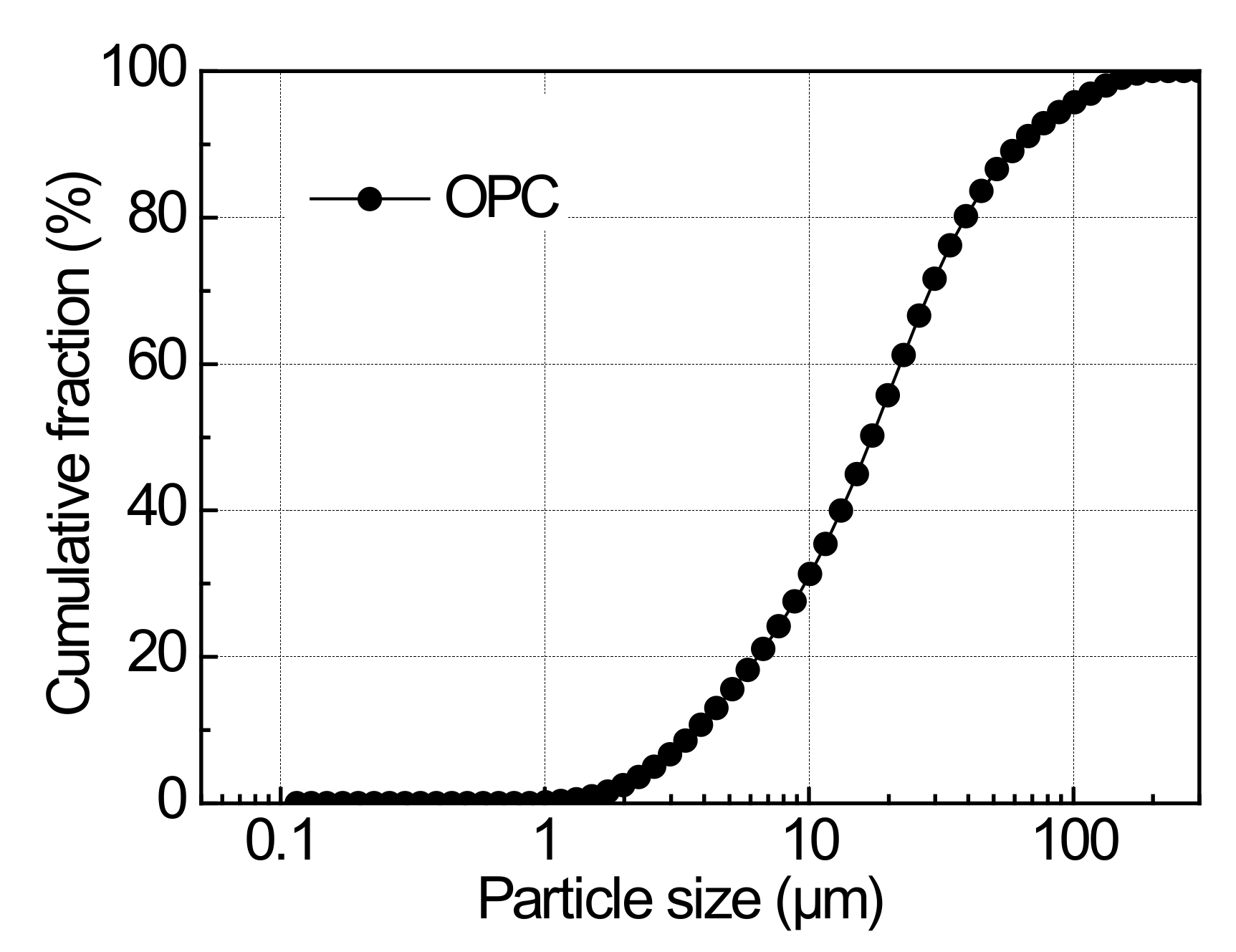

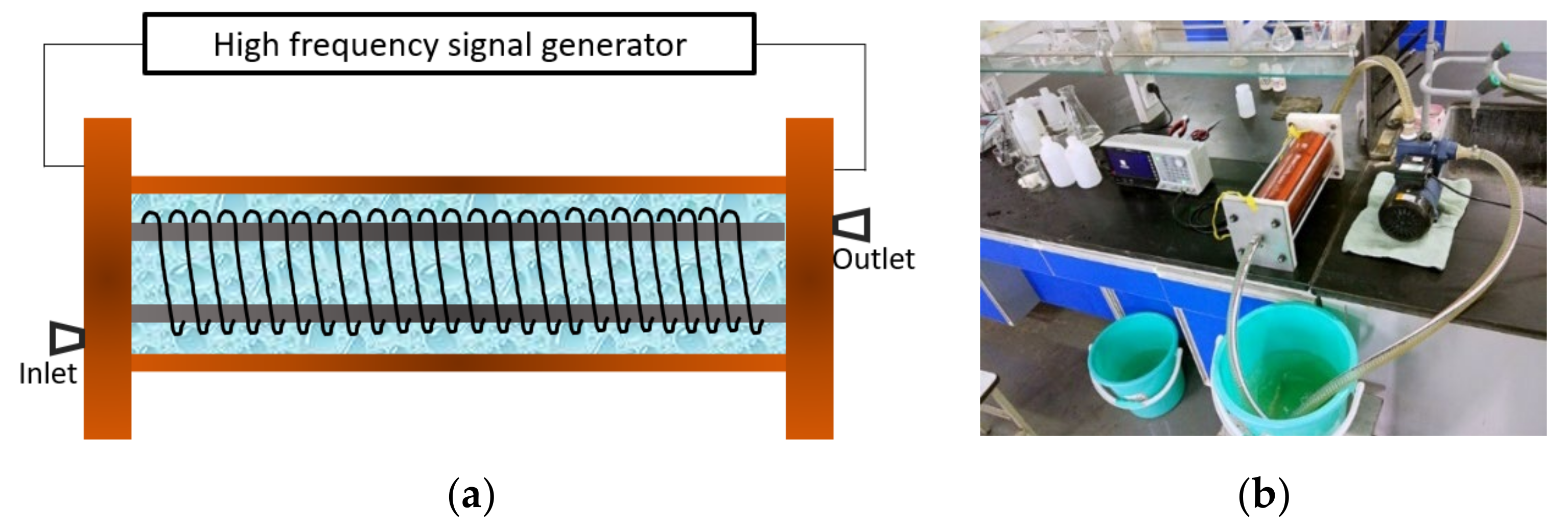


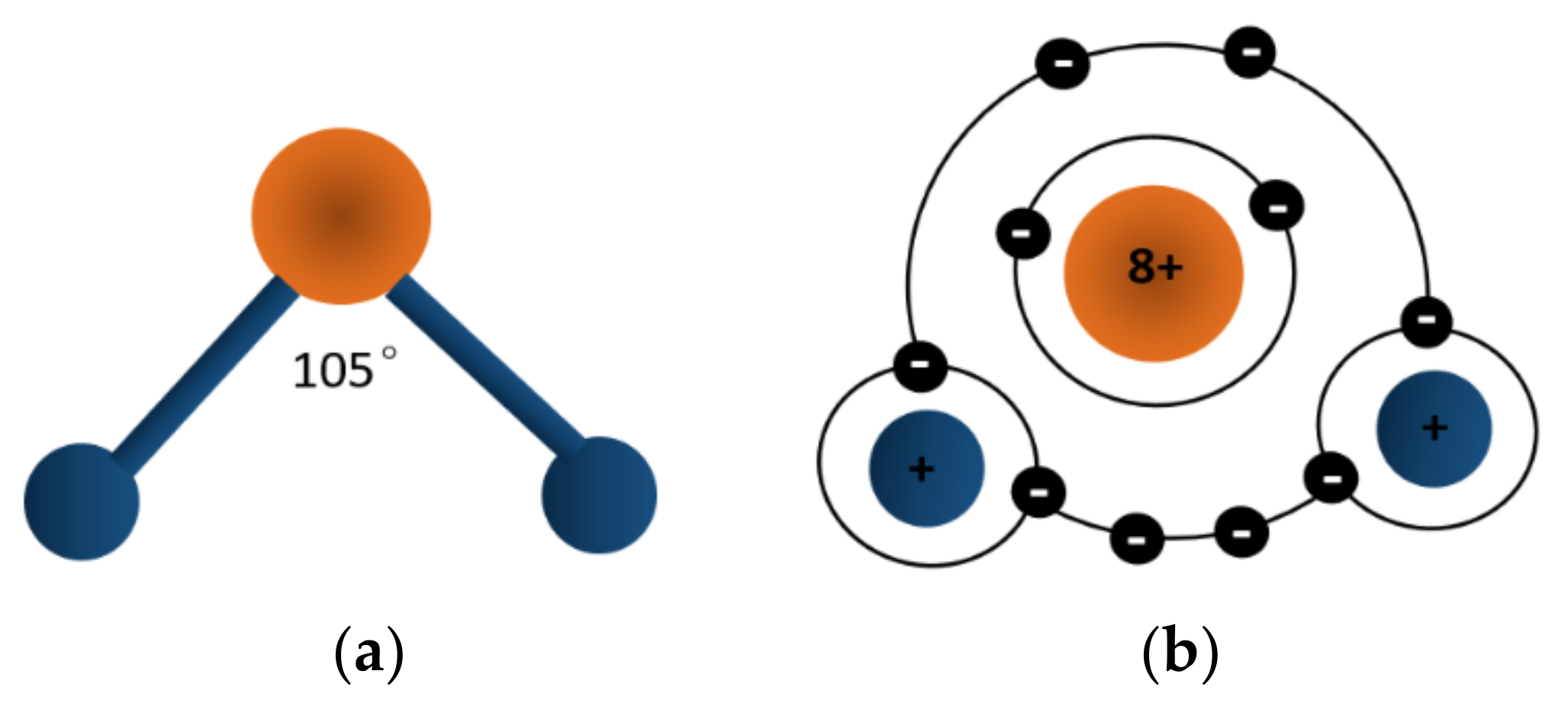
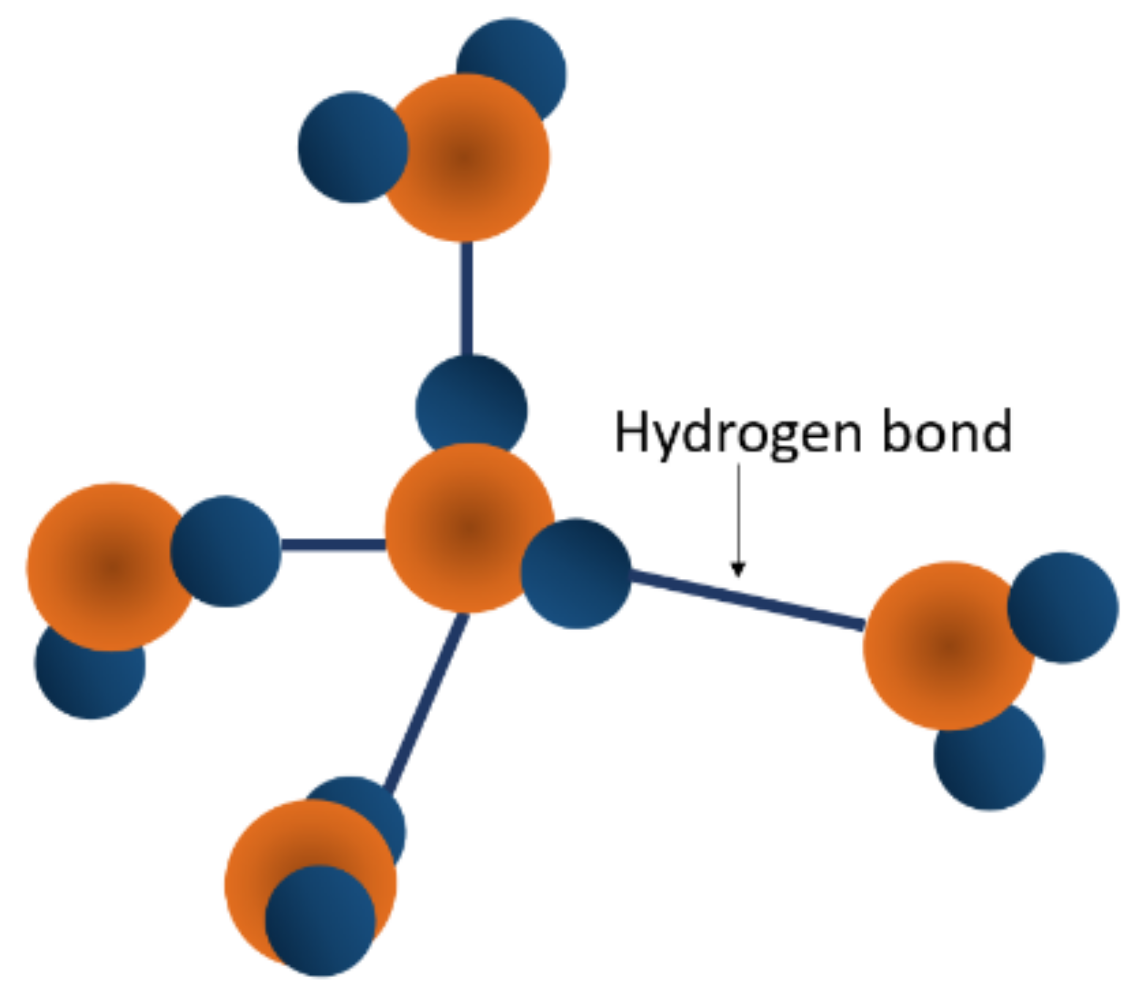
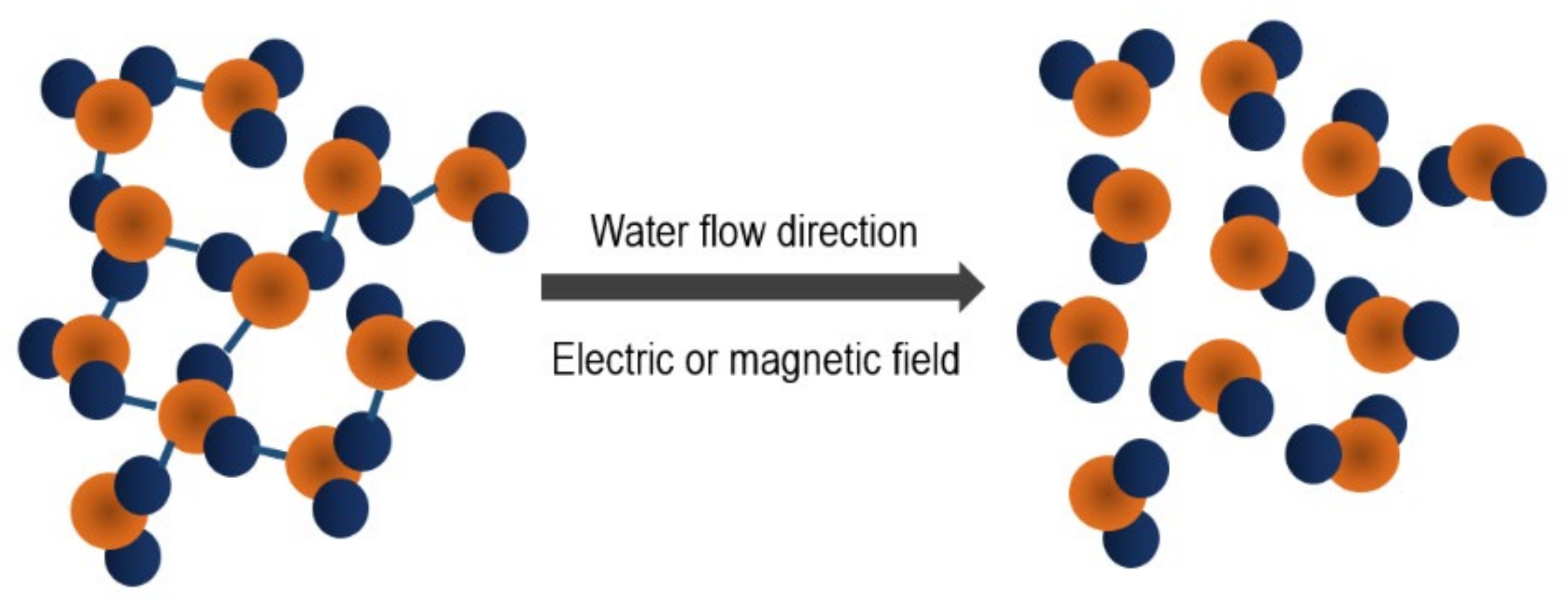
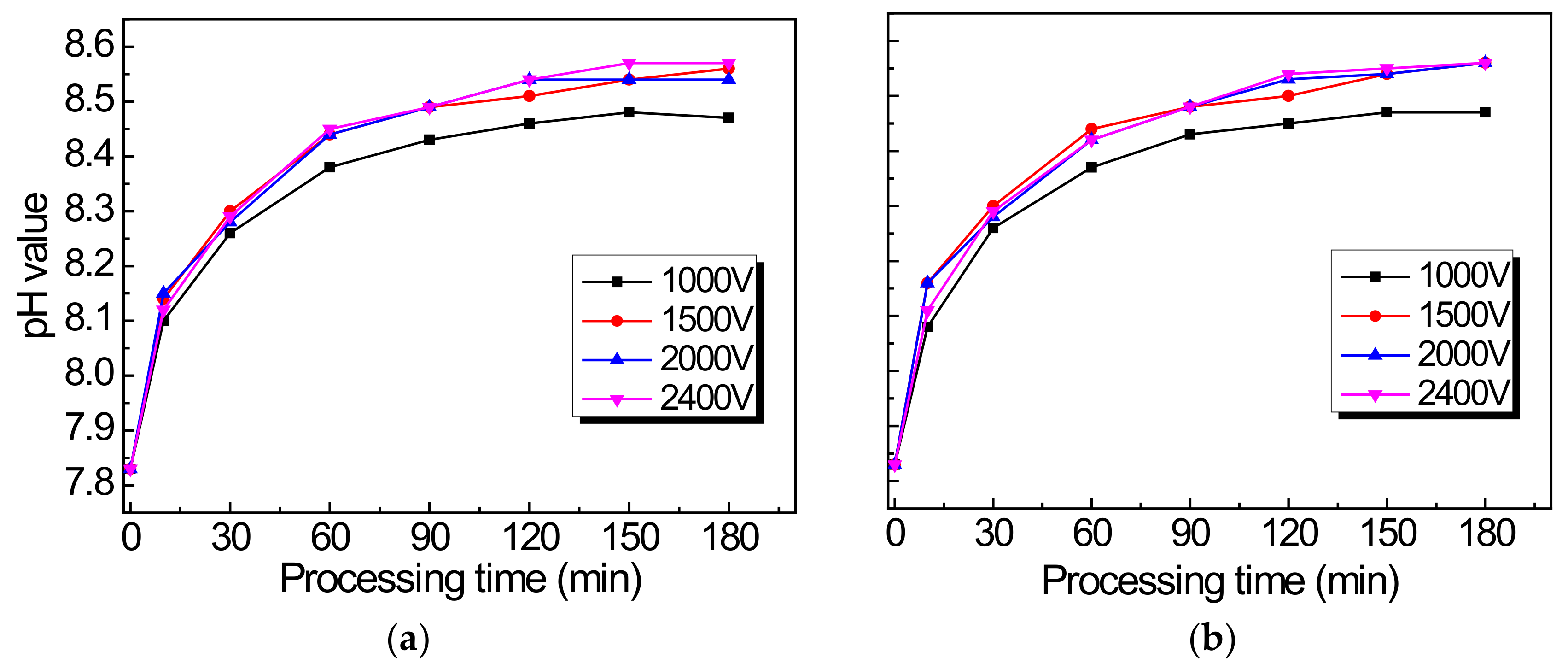
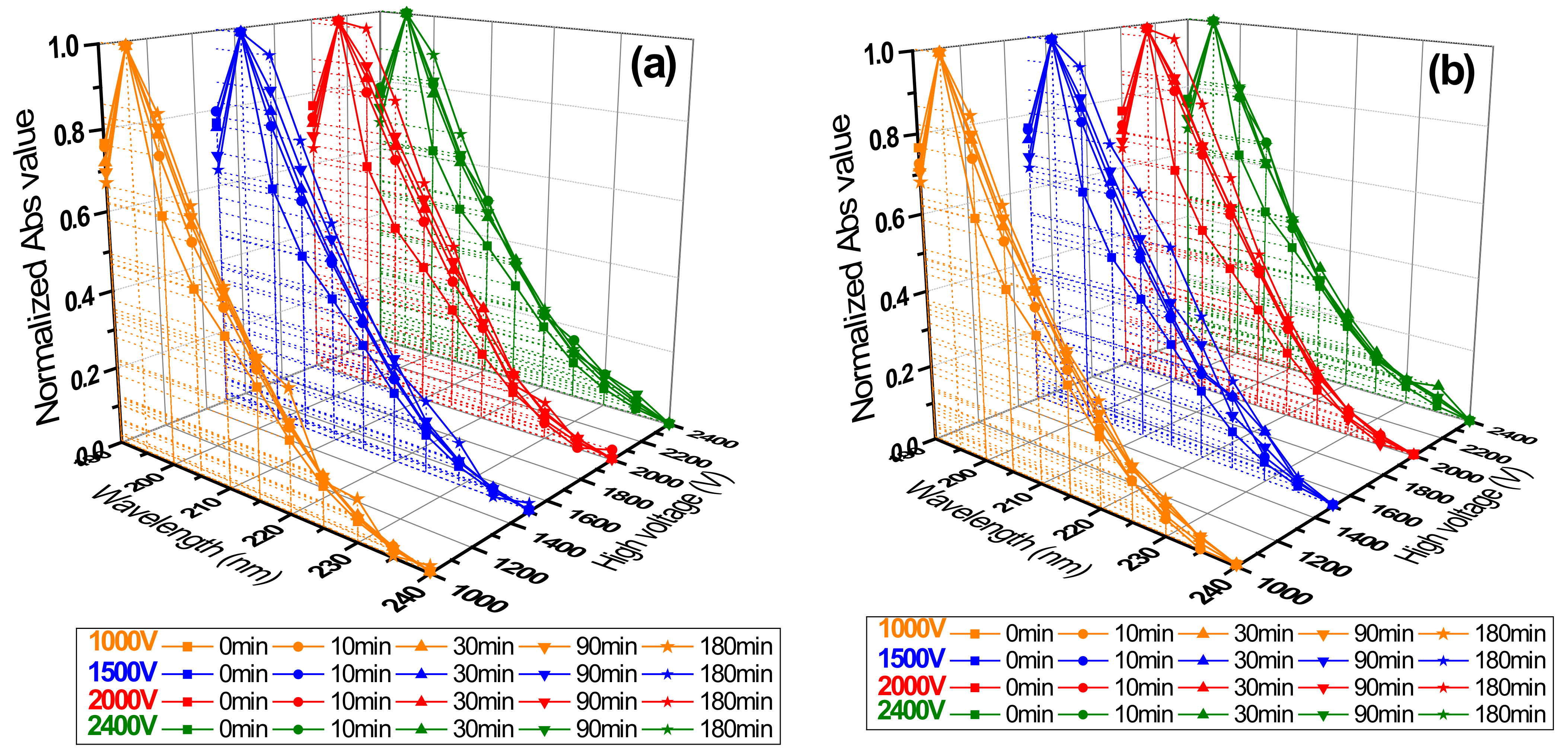
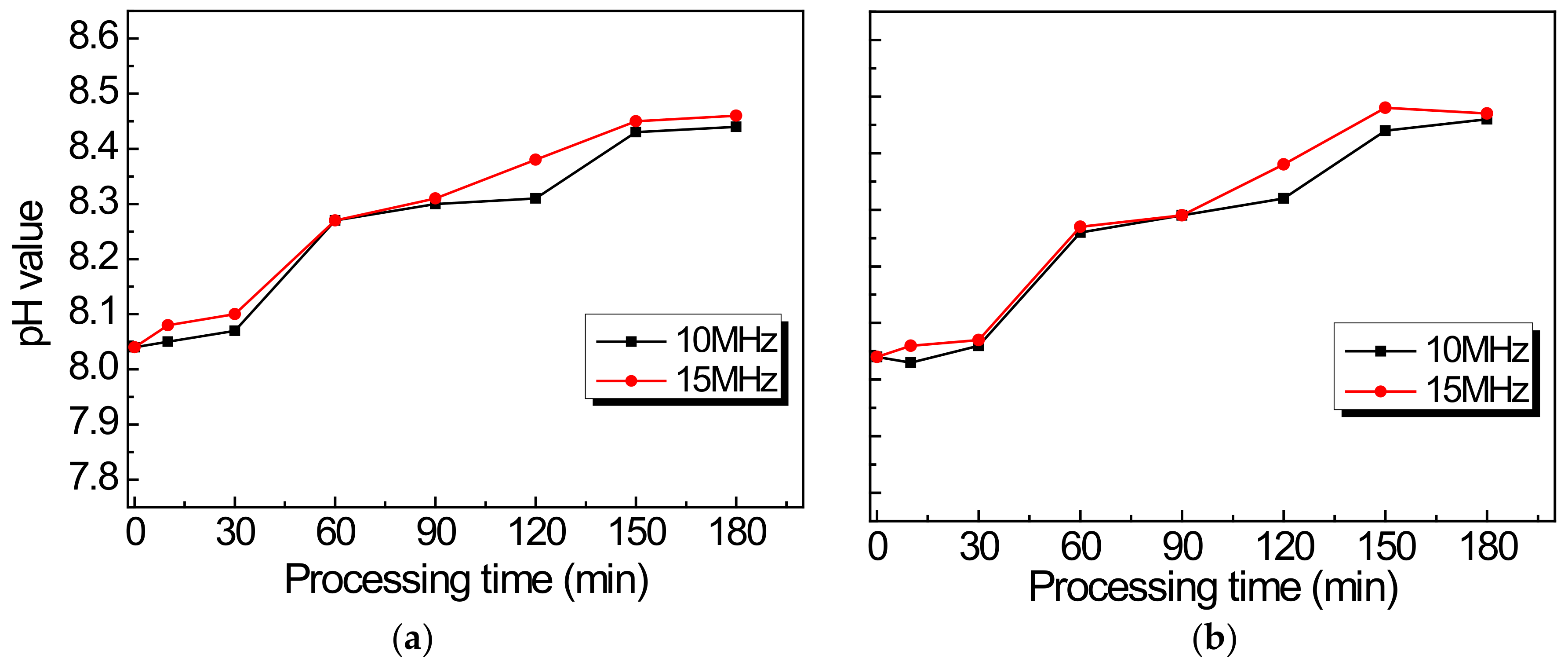
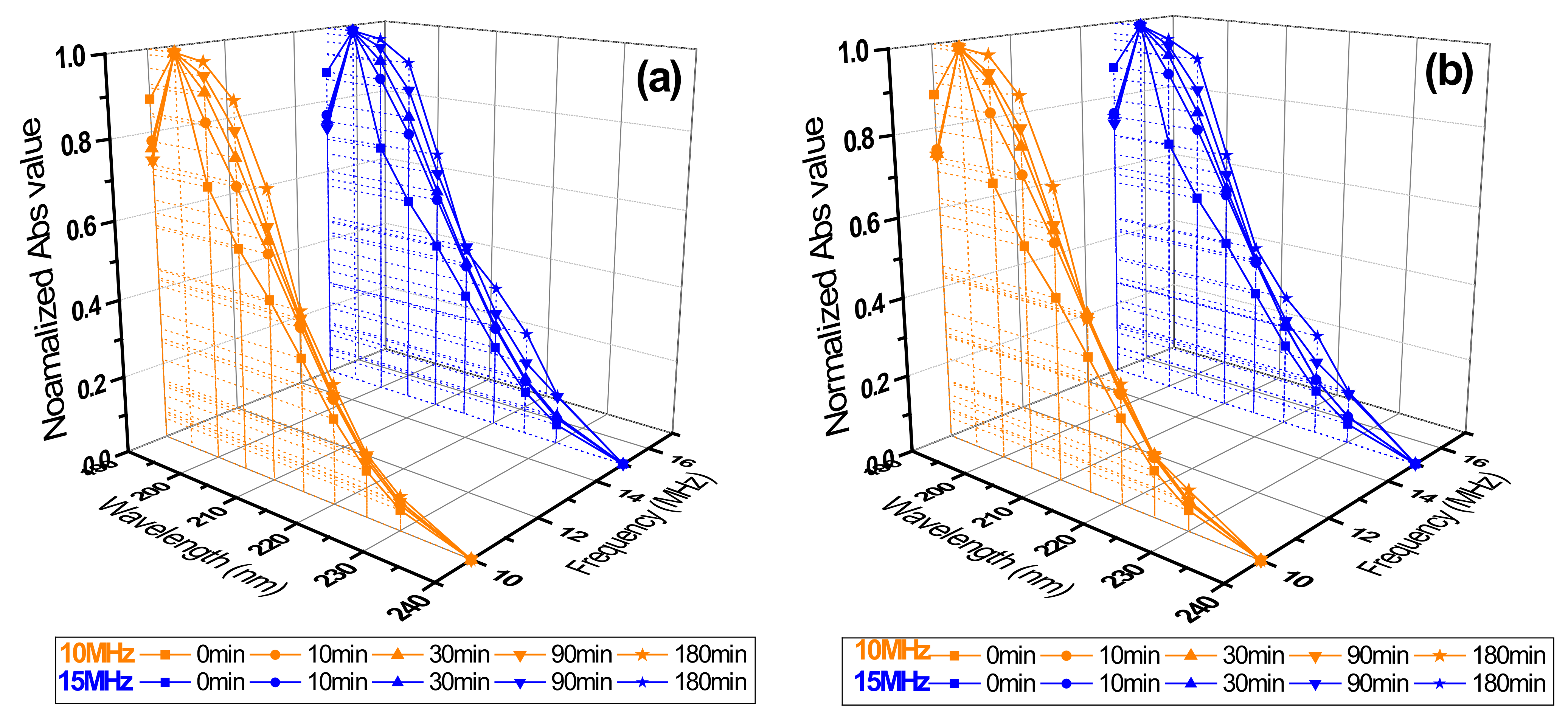
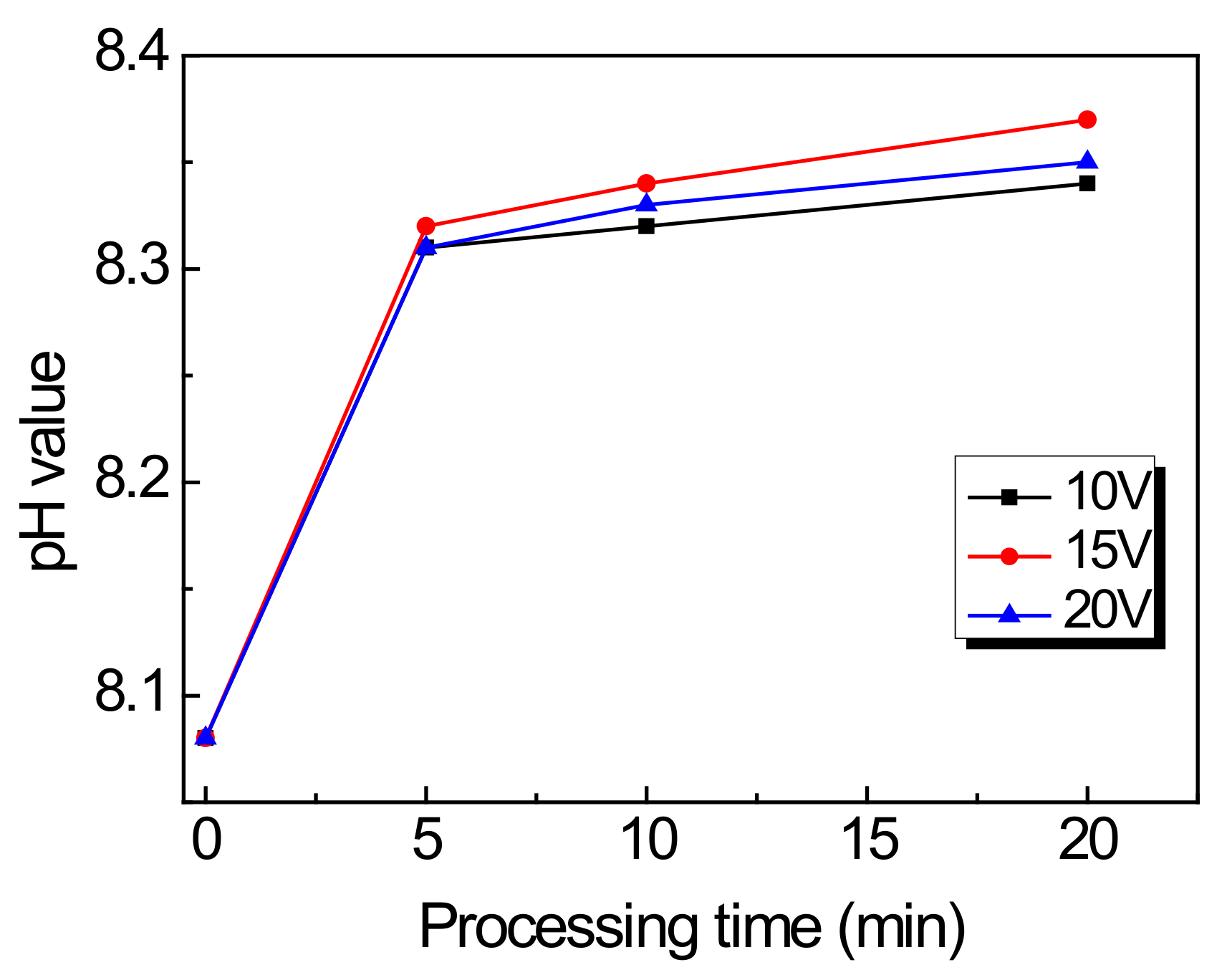

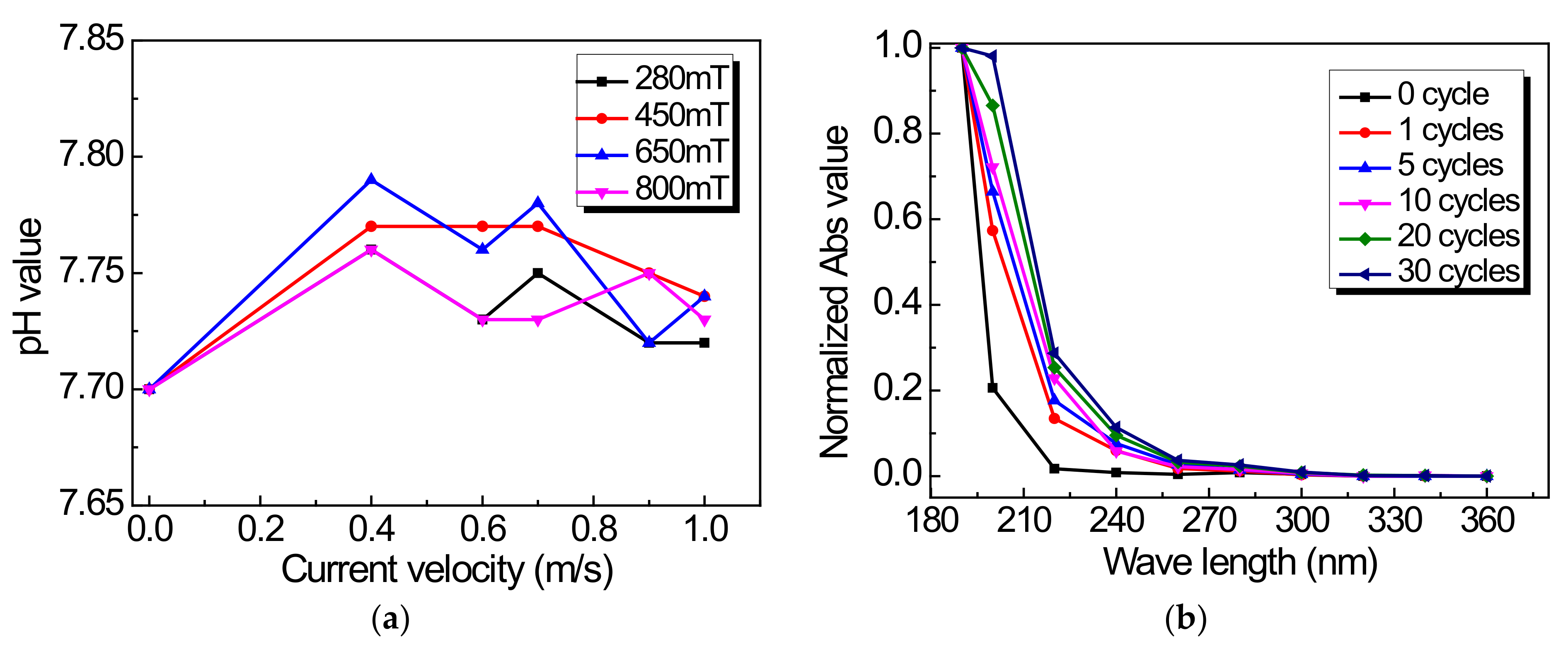

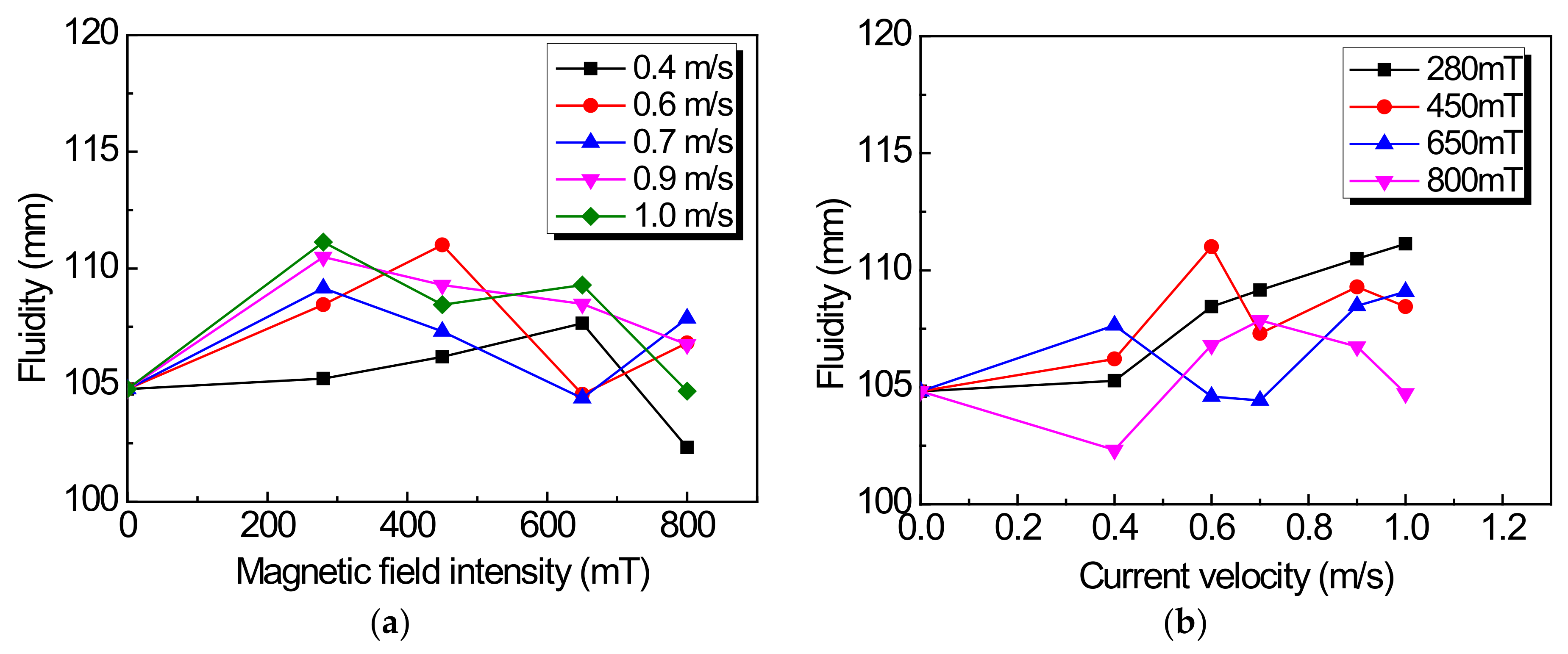
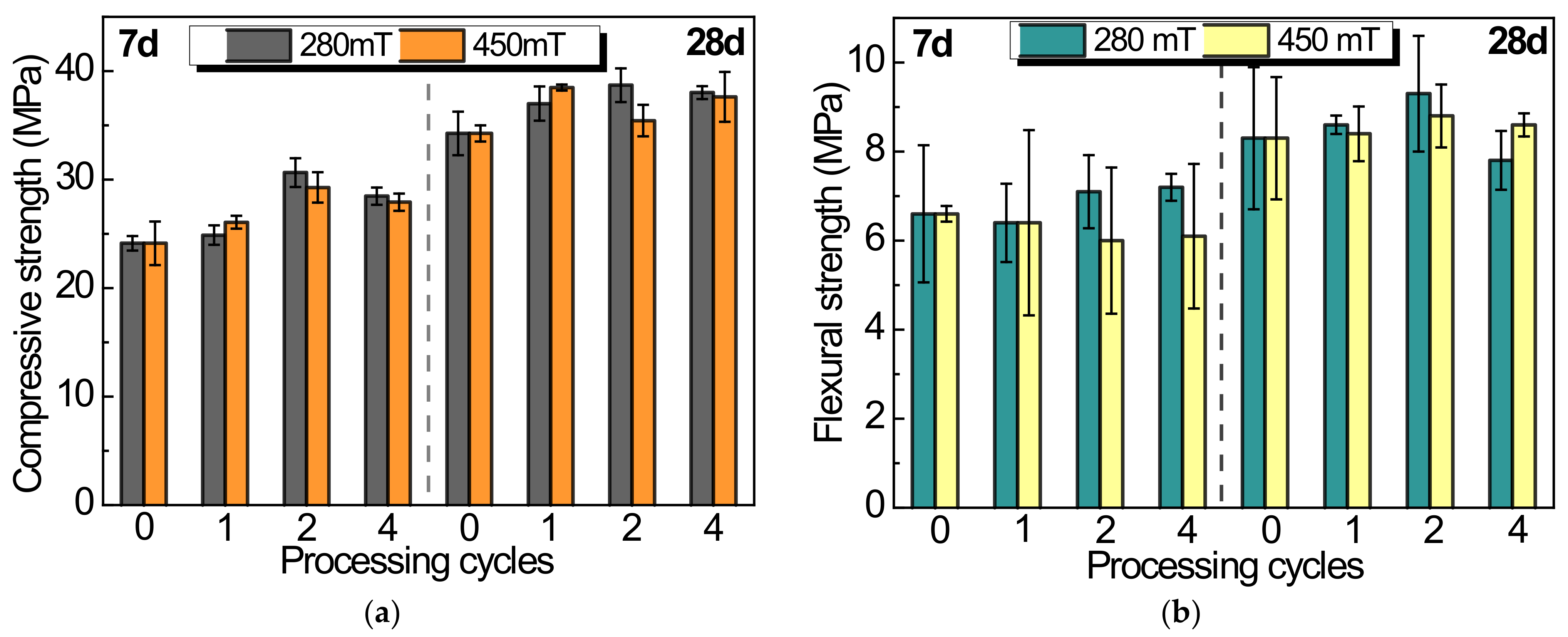
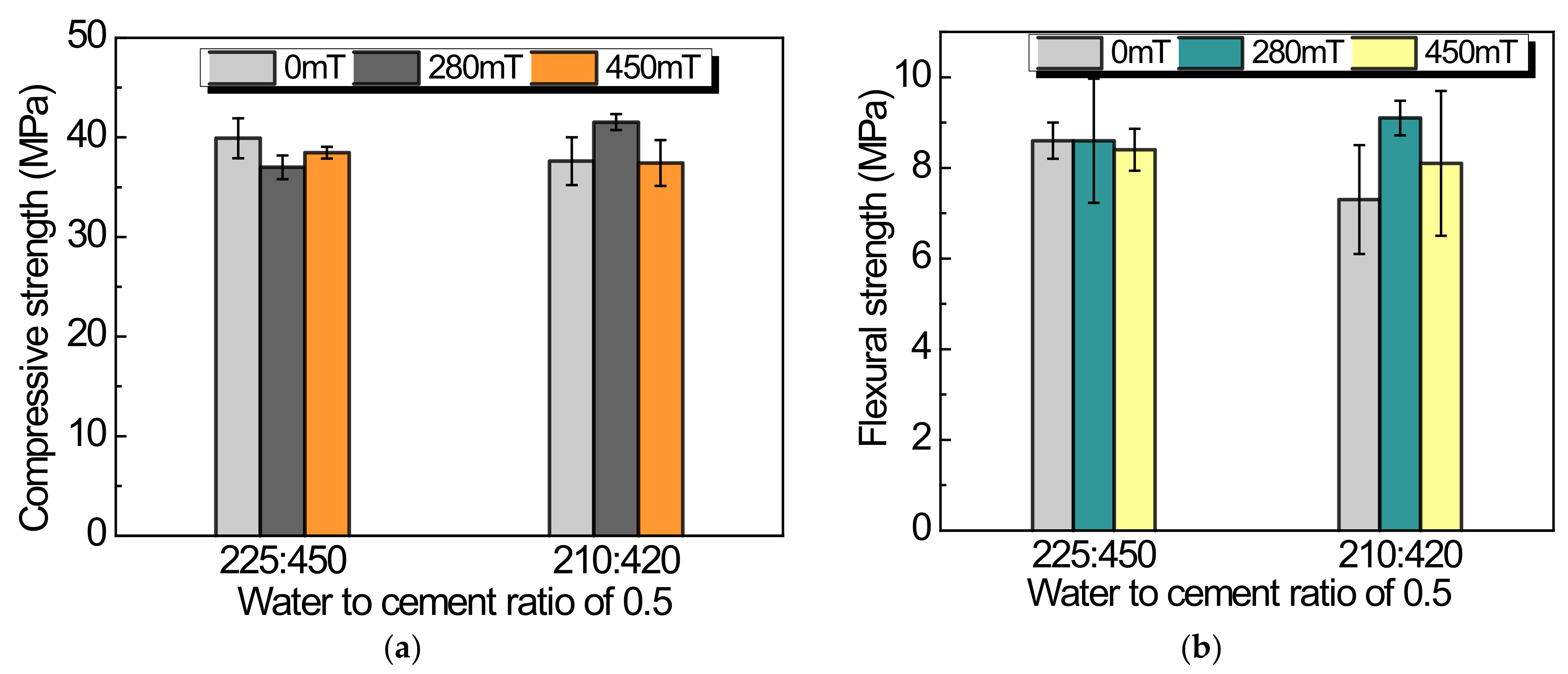
| SiO2 | Al2O3 | Fe2O3 | CaO | MgO | SO3 | K2O | Na2O | TiO2 | P2O5 | LOI |
|---|---|---|---|---|---|---|---|---|---|---|
| 19.44 | 7.55 | 5.36 | 57.32 | 4.32 | 3.30 | 0.94 | 0.21 | 0.50 | 0.31 | 2.72 |
Publisher’s Note: MDPI stays neutral with regard to jurisdictional claims in published maps and institutional affiliations. |
© 2021 by the authors. Licensee MDPI, Basel, Switzerland. This article is an open access article distributed under the terms and conditions of the Creative Commons Attribution (CC BY) license (https://creativecommons.org/licenses/by/4.0/).
Share and Cite
Zhao, K.; Zhang, P.; Wang, B.; Tian, Y.; Xue, S.; Cong, Y. Preparation of Electric- and Magnetic-Activated Water and Its Influence on the Workability and Mechanical Properties of Cement Mortar. Sustainability 2021, 13, 4546. https://doi.org/10.3390/su13084546
Zhao K, Zhang P, Wang B, Tian Y, Xue S, Cong Y. Preparation of Electric- and Magnetic-Activated Water and Its Influence on the Workability and Mechanical Properties of Cement Mortar. Sustainability. 2021; 13(8):4546. https://doi.org/10.3390/su13084546
Chicago/Turabian StyleZhao, Kaiyue, Peng Zhang, Bing Wang, Yupeng Tian, Shanbin Xue, and Yuan Cong. 2021. "Preparation of Electric- and Magnetic-Activated Water and Its Influence on the Workability and Mechanical Properties of Cement Mortar" Sustainability 13, no. 8: 4546. https://doi.org/10.3390/su13084546
APA StyleZhao, K., Zhang, P., Wang, B., Tian, Y., Xue, S., & Cong, Y. (2021). Preparation of Electric- and Magnetic-Activated Water and Its Influence on the Workability and Mechanical Properties of Cement Mortar. Sustainability, 13(8), 4546. https://doi.org/10.3390/su13084546







